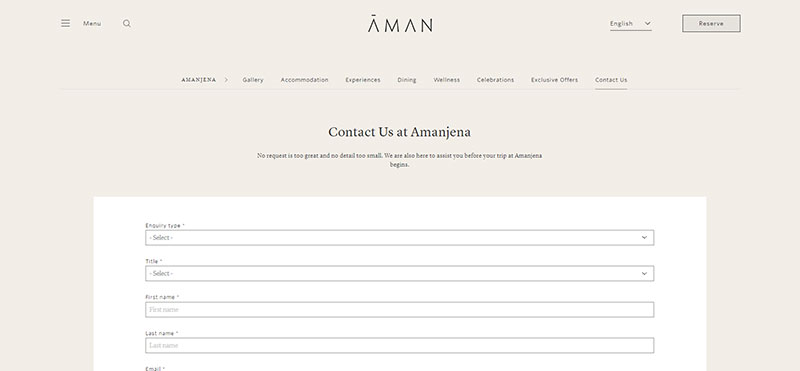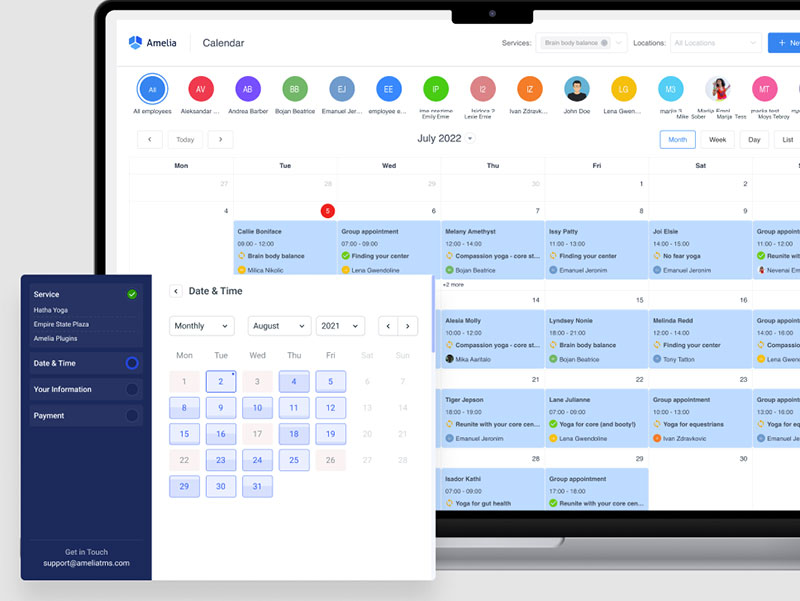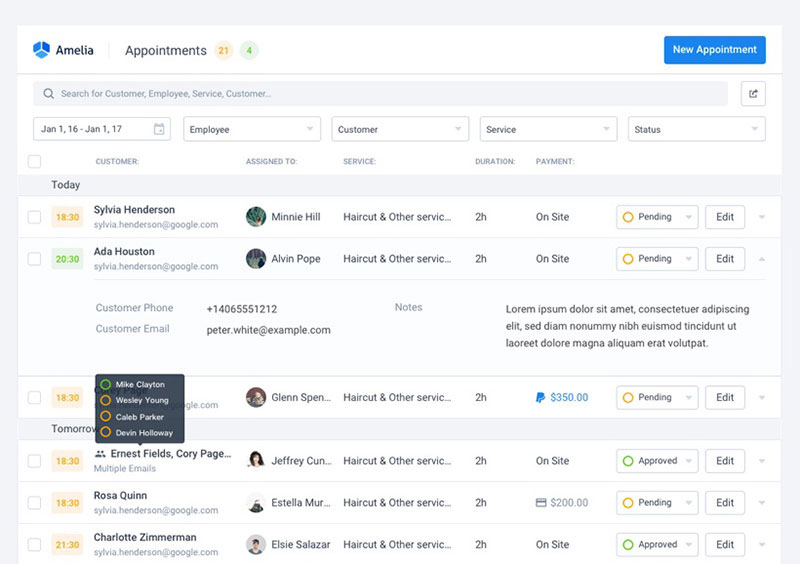As the world increasingly moves online, adapting to this digital frontier has become a necessity for the survival and growth of offline businesses. And knowing how to take your offline business online is crucial for the transition to go as smoothly as possible.
This isn’t just a passing trend; it’s a must-do for businesses of all shapes and sizes. Whether you run a cozy corner store or a well-established enterprise, the potential of going digital is enormous. It’s like opening a treasure chest of opportunities for engaging with customers, boosting revenue, and growing your business.
So, in this article, we’re going to dive into the nitty-gritty of shifting from the physical world to the digital one. We’ll give you down-to-earth advice, share practical strategies, teach you all there is to know about how to take your offline business online. Whether you’re just dipping your toes into the online waters or want to polish up your existing online game, we’ve got you covered.
Let’s explore the exciting world of conducting your business online together!
Why the Digital Leap Matters
The transition from brick-and-mortar to online isn’t merely a trend; it’s a strategic move that can make or break a business’s future.
So, why does this digital leap matter so much? Let’s break it down:
- Changing Consumer Behavior: Consumers have changed the way they shop and interact with businesses. With the convenience of online shopping or and online appointment booking, and the ability to research products and services at their fingertips, people now prefer the comfort of their homes over physical stores.
- Global Reach: The internet knows no borders. Going digital means your business can be accessible to a global audience. This opens up a world of opportunities for expansion and growth that offline businesses could only dream of.
- 24/7 Availability: Your digital storefront never closes. It’s open 24/7, accommodating customers from different time zones and varying schedules. This means more sales opportunities and a chance to serve customers whenever they need you.
- Data-Driven Insights: The digital realm provides you with a wealth of data and analytics. You can track customer behavior, preferences, and scheduling trends in real-time. This invaluable information helps you tailor your offerings and marketing strategies for better results.
- Competitive Advantage: Many of your competitors are likely already online or planning to be. If you lag behind, you risk losing market share and relevance. An online presence not only keeps you competitive but can also give you the edge.
- Adaptability: Digital platforms allow for quick adaptations and experimentation. You can easily test new products, marketing strategies, or business models without the long lead times and risks associated with offline changes.
- Marketing and Engagement: Online platforms offer diverse marketing channels, from social media and email marketing to search engine optimization. These tools enable you to engage with your audience in ways that are impossible offline.
How to Take Your Offline Business Online in 17 Steps
Step #1: Define your online service offering
Start by listing the services you currently offer offline. What do you excel at? What do your clients love about what you do? These are the core services that you’ll need to brainstorm for your online business ideas which ideally should resolve their pain points.
Now, not everything might be suitable for the digital realm. Consider the practicality of delivering each service online. For example, if you’re a personal trainer, one-on-one virtual training sessions make sense, but you can’t exactly spot someone while bench pressing through a screen.
Don’t stop at just duplicating your offline services. Think about new services or add-ons that make sense in the online world. Maybe you can offer digital training plans, consultation calls, or downloadable resources related to your expertise.
Who are your target clients, and what do they need online? Take the time to understand your potential online clientele. What problems can you solve for them in the virtual space? Tailor your offerings to meet their needs.
Consider how you’ll price your online services. Will it be a subscription model, one-time payments, or a tiered pricing structure? Keep in mind that the value you provide should be reflected in your pricing. If you’re not sure where to start, consider offering a limited-time trial or beta version of your online services to gather feedback and refine your offerings based on real client experiences.
Step #2: Build a professional website

Alright, picture this: your website is like your digital storefront, and you want it to be as inviting as a cozy coffee shop. Only then can you create a website that brings a lot of customers your way.
Here’s how to stake your offline business online successfully:
Website builder
Think of this as your digital toolbox for creating your online masterpiece. There are some super user-friendly website builders out there, like WordPress, Wix, Squarespace, and Weebly. These are like those easy-to-assemble furniture sets – they come with templates and drag-and-drop features that make designing your site a piece of cake, even if you’re not a tech wizard.
Hosting
Now, hosting is like renting a space on the internet for your website. It’s where all your web pages, images, and content get stored. Most website builders offer hosting services bundled in, so you can usually handle this all in one place.
Server
Hosting, in essence, means having your site’s files stored on a server – a powerful computer that’s always connected to the internet. This server is like the engine behind your website, ensuring it’s up and running for visitors 24/7.
Domain name
Think of a domain as your online crib’s address. So, it’s gotta be snappy, stand out, and easy to remember.
Quick tip: Keep it snazzy, on-brand, and something people won’t mess up spelling. After all, you want them dropping by, not getting lost in the digital alleyways.
Domain management
While transitioning your business online demands a professional website and brand consistency, the importance of domain management cannot be overlooked. Choosing the right domain name and managing it effectively is foundational in establishing your digital presence, securing your brand identity, and ensuring seamless user navigation.
Keep it user-friendly
Your website should be easy to use. Nobody wants to wrestle with a confusing website, right? Make sure your navigation is intuitive, and everything is just a click or tap away.
Visual appeal
Your website needs to look good – we’re talking eye-catching design. Use appealing colors, high-quality images, and fonts that are easy on the eyes. It’s like dressing up for a first date with your audience.
Mobile-friendly
Everybody’s on their phones these days, so your website better look sharp on mobile devices. Responsive design is the name of the game here – if you want to learn how to take your offline business to online, go mobile.
About you
Don’t forget to introduce yourself! Clients want to know who’s behind the awesome services they’re signing up for. Share a bit about your story, your expertise, and what makes you unique.
Clear service descriptions
Each service you offer should have a clear and concise description. Think of it as explaining your services to a friend – straightforward and easy to understand.
Booking and contact
Make it easy for clients to book your services and get in touch with you. Include clear calls-to-action for booking appointments or reaching out with questions.
Testimonials and reviews
If you’ve got happy clients (which you likely do), showcase their testimonials and reviews. It’s like letting others vouch for your awesomeness.
Blog or resources
Consider having a blog or resources section where you can share valuable information related to your services. It’s like giving away free samples of your expertise.
FAQs
Anticipate common questions your clients might have and create a FAQ section. It saves time and helps potential clients find the answers they need.
Security
Don’t forget about security! Ensure your website is protected with an SSL certificate to keep client data safe.
Professional email
Set up a professional email address using your website domain. It looks way more legit than using a generic email service.
Remember, your website is your digital handshake. It’s often the first impression potential clients get of your online service. So, take your time to make it look and feel just right. With a user-friendly, visually appealing, and informative, WordPress-powered website, you’ll be well on your way to online success!
Step #3: Implement online booking and scheduling
So, how to take your offline business online without taking your bookings online, right?
Online expansion. Feels like an exciting leap, right?
But, it also means a ton of challenges. Finding the right platform, assessing the advantages and disadvantages of WordPress booking plugins, especially when compared to booking software, scheduling appointments, managing follow-ups… Sounds like a nightmare, right?
Now, imagine a sidekick, helping you transition your offline business online effortlessly. Streamlining your appointments, handling the follow-ups, managing your availability, your customers, and your employees.
Say hello to Amelia.
Take your appointments online with Amelia
Amelia is a WordPress booking plugin designed to be as smooth as silk – easy to use for both your employees and your customers.
It lets your clients choose the service they want, pick a date and time, and confirm their reservation – all with a few clicks. Easy to navigate, shows your availability in real-time, sends automated notifications and reminders, highly customizable, with multiple payment options – you name it, you have it!
In fact, Amelia is more than a WordPress booking solution. It’s your personal digital assistant, working around the clock so you don’t have to.
Amelia ensures:
- No more double bookings – peace of mind for you.
- Efficient scheduling – satisfied customers and even more bookings.
- Automated follow-ups – zero forgotten appointments for you.
- 24/7 availability – a booking system that never sleeps.
Remember, every detail counts. Your customer’s experience with your online booking can make or break their perception of your business.
So, why not leave it to a tool designed specifically for this purpose?
Let’s face it, going online can be daunting. But with Amelia, it’s just exciting.
Step #4: Set up secure payment processing
Setting up secure payment processing for your online service business is a fundamental step in transforming your offline business into an online one.
You first need to choose a reliable payment gateway that allows clients to pay for your services online. Popular options include PayPal, Stripe, or Square. Ensure that the selected payment gateway follows industry-standard security practices and uses encryption to protect clients’ financial information.
Then, prioritize security to protect clients’ data. Implement encryption and follow best practices to ensure that payment transactions are secure. Make clients feel confident that their financial details are protected.
Also, offer flexibility by providing various payment methods. Include credit card options, PayPal, and other commonly used payment options to accommodate a diverse range of clients. A seamless payment process enhances customer experience.
Moreover, maintain transparency in your pricing structure. Clearly communicate all costs associated with your services during the checkout process. Clients should have a comprehensive understanding of what they’re paying for before finalizing their transactions.
In addition, optimize the payment process for mobile devices to accommodate clients who prefer mobile browsing. Ensure that the payment interface is user-friendly and responsive, making it easy for clients to complete transactions on their smartphones or tablets.
Finally, provide clients with a payment confirmation page after successful transactions. This confirmation reassures clients that their payments have been processed correctly and reinforces their trust in your service.
Step #5: Develop engaging online content
Creating captivating online content serves as the cornerstone of your digital presence, playing a pivotal role in building connections and brand loyalty. This dynamic content strategy encompasses various formats such as blog posts, videos, webinars, podcasts, and downloadable resources, all of which provide valuable insights and information tailored to your clients’ needs. Consistency in content delivery is paramount; regularly updating your content not only keeps your audience engaged but also showcases your unwavering commitment to your industry and clients.
Furthermore, storytelling becomes a potent tool in humanizing your brand. It allows you to share compelling narratives that resonate with your audience, forging deeper connections. To enhance the visual appeal of your content, incorporate high-quality images, infographics, and videos that not only capture attention but also convey information effectively.
To ensure a high level of quality, consider using an online grammar checker. It helps guarantee your content is articulate, professional, and free from errors which reflect positively on your brand.
Encouraging interaction within your content ecosystem is equally vital. Integrate interactive elements like polls, quizzes, surveys, and discussions to foster a vibrant online community. These interactive features not only engage your audience but also provide valuable feedback and insights.
Optimizing your content for search engines (SEO) ensures improved discoverability. Extensive keyword research, meta tags, and strategic placement of keywords within your content can boost your content’s visibility in search results. Moreover, creating shareable content amplifies your reach; when your audience finds your content valuable and share-worthy, it can organically reach a broader audience through social media and word-of-mouth.
By sharing industry insights, addressing common questions, and providing valuable resources, you position yourself as a trusted authority in your field. This educational content not only fosters credibility but also empowers your audience to make informed decisions.
Finally, adaptability to industry trends is crucial. Staying updated with the latest developments and trends in your field enables you to remain relevant and responsive to your audience’s evolving needs.
Step #6: Optimize for local SEO
When learning how to take your offline business online, local SEO is the compass that guides local clients to your virtual doorstep. Here’s why it’s crucial and how to make it work for your online service business:
Local visibility
First and foremost, local SEO boosts your visibility in your specific geographic area. When potential clients search for services like yours, you want your business to pop up on their radar. It’s like putting a neon sign outside your virtual store.
Google My Business
Creating and optimizing your Google My Business (GMB) listing is a game-changer. It’s like having a listing in the local Yellow Pages but with way more detail. Fill it out completely with your business name, address, phone number, hours, and high-quality images.
Consistent NAP
NAP stands for Name, Address, and Phone number. Ensure that your NAP information is consistent across all online platforms and directories. This consistency reinforces trust with both search engines and potential clients.
Local keywords:
Incorporate local keywords into your content. If you’re a local dentist, for example, use phrases like “best dentist in [your city]” naturally within your website content. It helps search engines understand where you’re located and who you serve.
Online reviews:
Encourage your satisfied clients to leave online reviews. One way to do this is by using the best free QR code generator to provide scannable codes that link directly to review pages. This simplifies the process and increases the chances of getting feedback.
Positive reviews not only boost your credibility but also play a significant role in local SEO rankings. It’s like word-of-mouth advertising, but in the digital age.
Local citations
Get your business listed on local directories and citation sites. Yelp, YellowPages, and industry-specific directories are valuable. Ensure that your NAP information is accurate and consistent across these platforms.
Mobile optimization
Make sure your website is mobile-friendly. Many local searches happen on mobile devices, so if your site isn’t mobile-responsive, you’re missing out on potential clients.
Schema markup
Implement schema markup on your website. This code helps search engines understand the context of your content, which can lead to better search results.
Location pages
If your services span multiple locations, create location-specific pages on your website. This not only improves your local SEO but also caters to potential clients in those areas.
Local content
Create content that’s relevant to your local audience. Share news about your involvement in the community, local events, or case studies of clients you’ve helped in the area.
Track and adjust
Regularly monitor your local SEO performance. Tools like Google Analytics and Google Search Console can provide valuable insights. If you’re not ranking as high as you’d like, adjust your strategy accordingly.
Local SEO is like planting your flag in your digital neighborhood. By optimizing for local search, you ensure that your online service business is easily discoverable by potential clients in your area. It’s a powerful tool for connecting with the people who need your services most.
Step #7: Utilize social media
Social media is an indispensable tool for taking your offline business online. Its significance extends beyond mere promotion; it’s about creating a dynamic online presence that engages your audience and drives growth.
First off, social media platforms provide a vast stage to showcase your services. Like opening up shop on a bustling street, you can attract potential clients from various corners of the digital world. To do this effectively, employ targeted strategies that align with your business goals.
Engage actively with your audience. Respond to comments, messages, and interact through polls, surveys, and live sessions. Think of social media as a lively gathering where you’re forging real connections. By doing so, you can turn casual visitors into devoted clients and even brand advocates.
Content sharing is at the core of social media. Share your expertise through blog posts, videos, infographics, and more. Treat each post as a pamphlet handed out to passersby, offering valuable insights and solutions. Consistency is vital here; it’s akin to maintaining regular store hours. Your audience comes to expect and anticipate your content, which fosters engagement.
Social media is dynamic, much like a thriving market. Paid advertising can be your ticket to targeted exposure, akin to running targeted ads in the local newspaper but with precise digital targeting. Collaborate with influencers and experts to broaden your reach. Continuously monitor your social media efforts, analyze data, and adjust your strategy. Flexibility is key in this ever-evolving landscape.
In essence, social media is your online business’s bustling marketplace, offering access to a diverse audience, a platform for engagement, and a conduit for showcasing your expertise. Similarly, building an online marketplace can further enhance your digital footprint, providing a structured platform where you can feature and manage your services efficiently, expand your reach, and deepen customer interactions. By utilizing social media effectively and adapting to its dynamic nature, you can foster growth, build trust, and create a vibrant online community around your services.
Step #8: Establish clear communication channels

In the digital landscape, clarity and accessibility are key. When looking into how to take your offline business online, you need to consider communication channels. Ensure that your contact information, including email, phone number, and any relevant social media profiles, is prominently displayed on your website and social media platforms. It’s like having your business phone number listed in the local directory, but with the added advantage of being just a click away. This accessibility not only instills trust but also encourages potential clients to reach out without hesitation.
Moreover, consider integrating live chat functionality into your website. This is akin to having a friendly customer service representative at the front desk of your physical store, ready to assist clients with any inquiries. Live chat not only provides real-time answers but also demonstrates your commitment to excellent customer service.
Email remains a cornerstone of digital communication. Ensure that your email communication is professional, prompt, and organized. Respond to inquiries and messages promptly, as delayed responses can lead to missed opportunities. It’s like maintaining a well-organized email inbox, akin to keeping your physical office tidy and efficient.
Additionally, leverage technology to automate communication where possible. Automated email responses, appointment reminders, confirmations, and notifications can streamline your client interactions, enhancing their experience. It’s like having an efficient scheduling system that ensures appointments run smoothly and clients stay informed.
Consider implementing Voice over Internet Protocol (VoIP) as well. This not only makes it easier for your teams to experience clearer calls but also transforms the way your teams collaborate by optimizing call flows, such as implementing intelligent call routing, automated call distribution, and interactive voice responses (IVRs). It integrates smoothly with your online infrastructure, offering a practical solution for both internal and external needs.
Of course, don’t forget to send out SMS reminders and confirmations as well – you never know which customer prefers receiving text messages over emails.
Step #9: Leverage online reviews and testemonials
Online reviews and testimonials serve as digital word-of-mouth recommendations. And are crucial if you are looking to take your offline business online. They are like having satisfied customers share their positive experiences with your business to a wider audience. These endorsements are a potent tool for building trust and credibility. When potential clients see that others have had positive interactions with your services, it instills confidence in your offerings.
Encourage clients to leave honest reviews. Authenticity matters; genuine feedback carries more weight than overly curated or biased reviews. It’s like showcasing the true essence of your business, warts and all. Respond to both positive and negative reviews professionally and empathetically. Addressing concerns openly shows your commitment to client satisfaction.
Testimonials are more than just words; they’re success stories that illustrate the real impact of your services. Share these stories on your website and social media to give potential clients a glimpse into the value you provide. These narratives humanize your brand and make it relatable.
When featuring testimonials on your website or marketing materials, consider placing them strategically. Highlight key benefits or outcomes that potential clients may be seeking. Use compelling visuals and design elements to make testimonials stand out. It’s like presenting your greatest achievements on a digital trophy shelf.
Actively seek reviews and testimonials from satisfied clients. After a successful interaction or project, kindly request feedback. Provide clear instructions on where and how they can leave their reviews. Consider incentives or rewards for clients who take the time to share their experiences.
Also, don’t limit your review collection to just one platform. Encourage clients to leave reviews on various platforms, including Google, Yelp, Facebook, and industry-specific websites. Having a presence on multiple review platforms expands your reach and credibility.
Step #10: Adapt to virtual tools
Virtual collaboration tools
Platforms like Zoom, Microsoft Teams, or Slack facilitate seamless communication and collaboration among your team members, irrespective of their physical locations. It’s like having a digital conference room where you can conduct team meetings, client consultations, and collaborative work effortlessly.
Project management software
Tools like Trello and Asana help you manage projects, tasks, and deadlines efficiently. They enable you to assign tasks, track progress, and ensure everyone is on the same page. It’s like having a digital project manager who keeps your operations organized and efficient.
Online scheduling and booking systems
Implementing scheduling software like Amelia simplifies appointment setting and client bookings. Clients can easily view your availability and book services, saving time for both parties. It’s like having a 24/7 virtual receptionist who takes care of your appointment calendar.
Customer relationship management (CRM) tools
CRMs like Salesforce or HubSpot help you manage client relationships, track interactions, and nurture leads. They’re like your digital address book, keeping all client information organized and accessible.
Virtual payment solutions
Utilize secure online payment platforms like PayPal, Stripe, or Square to facilitate smooth and secure transactions with clients. It’s like having a digital cash register that accepts payments from anywhere in the world.
Cloud storage and file sharing
Transitioning from offline to online business is virtually impossible without a digital storage and filing system set in place. Tools like Google Drive, Dropbox, or OneDrive allow you to store, access, and share files and documents securely in the cloud. It’s like having a virtual filing cabinet that ensures your data is accessible whenever and wherever you need it.
Email marketing platforms
Platforms like Mailchimp or Constant Contact enable you to create and automate email marketing campaigns, keeping your clients informed and engaged. It’s like having a digital marketing assistant who sends out personalized messages to your audience.
Virtual learning and training tools
Various WordPress plugins can help you create and deliver online courses and training materials. It’s like having a virtual classroom where you can educate clients remotely.
Data analytics and insights
Leverage tools like Google Analytics or social media insights to gather data on client behavior and engagement. These insights can guide your marketing strategies and decision-making, ensuring your efforts are effective.
Cybersecurity tools
Invest in cybersecurity software and tools to protect your business and client data from online threats. It’s like having a virtual security guard that safeguards your digital assets.
Step #11: Provide exceptional online customer service
Providing great online customer service is a crucial part of your online service business. And it’s essential to ensure if you want to take your offline business online. In the digital world, where we can’t meet in person, how you help your customers can make a big difference.
First, answer customer questions and messages quickly and make an effort to really listen to what your customers are saying. Try to make each customer feel special by personalizing your responses. It’s like tailoring your services to fit each person’s needs. Make sure your messages are easy to understand and straightforward. Think of it like giving clear instructions for a game. You want your customers to know exactly what to do.
When problems come up, work on solving them as soon as possible. It’s like having a team that’s great at fixing things when they go wrong. Show that you care about your customers by being understanding and kind, especially when they’re going through a tough time. Imagine you’re offering a virtual shoulder to lean on.
Ask your customers for their thoughts and suggestions. This is like having a suggestion box at a physical store. Their feedback can help you get better.
No matter where your customers talk to you – email, social media, or your website – try to be consistent in how you help them. It’s like making sure your shop looks and feels the same everywhere.
Finally, make sure your team knows how to help customers and has the tools they need. Think of it as giving them the right tools to do their job well.
In the end, great online customer service is like giving a warm welcome to your customers in the digital world. It builds loyalty and makes your business shine.
Step #12: Take care of legal and compliance considerations
How to take your offline business online and be successful? Take care of the security matters!
First, when setting up your online service business, ensure it’s officially registered and licensed, similar to how you’d obtain permits for a physical store.
Next, think of contracts as your business rules. Create clear agreements that outline what you offer, how much it costs, and when payments are due. Make sure both you and your clients understand and agree to these terms. Protecting customer data is crucial. Just as you’d lock up sensitive documents in a physical office, implement protocols that align with the pyramid of pain model alongside standard data protection laws to ensure client information remains secure.
Consider trademarking logos and content and get permission to use others’ intellectual property. This is like safeguarding your brand or products, just as you would in a traditional business. Proper trademark registration can be crucial in effectively branding your online business. Reviewing the precise financial implications, such as the cost to register trademark, can save you from unforeseen expenses and ensure full legal protection.
Stay on top of taxes and financial records, possibly with the help of the best accounting software or an accountant. It’s as important as managing finances in any business.
Ensure your website is accessible to people with disabilities, much like having a wheelchair-accessible entrance for your physical store.
Also, be truthful in your advertising, avoiding deceptive practices, just as you would with traditional advertising.
Stay updated with changes in laws and regulations that might affect your online business, similar to keeping abreast of industry developments in a traditional business.
FAQ about Taking Your Offline Business Online
How do I decide which online platform is right for my business?
Well, choosing the right platform depends on a few key things. First, consider your business type and what you’re selling. If you’re offering products, an eCommerce platform like Shopify might be ideal.
But, if you’re a service provider, you may want to opt for something like WordPress that allows for more customization. Look into the features, costs, and usability of each platform, and see what aligns best with your needs.
What’s the process to set up an online shop?
Setting up an online shop can be simplified into a few steps. You’ll first need to choose a platform that suits your business. Then, create your store, customize the design to match your brand, and upload your products or services.
Include clear descriptions and high-quality images. Set up payment and shipping methods, then optimize your site for SEO. Once everything is set, launch your site and begin marketing!
How do I price my products or services online?
Pricing is a complex process and involves considering several factors. Research your competition first. Understand the market rates, but also know your costs – both production and operational.
Your price should cover these costs and bring in a reasonable profit. Consider value-based pricing, too. How much value does your product or service provide? What are customers willing to pay for that value? It’s a balancing act, for sure.
How do I market my business online?
Online marketing is a vast field, so buckle up! Start with a well-designed website that follows all the latest SEO practices. Engage on social media platforms where your target audience hangs out. Email marketing is powerful for customer retention, and content marketing helps you establish authority.
Pay-per-click advertising can help drive immediate traffic. Also, consider influencer partnerships. The key is to track your efforts, see what’s working, and continuously adjust your strategy.
Do I need a physical office to run an online business?
The beauty of the online world is that it can be entirely remote! Of course, some businesses might still need a physical space – maybe for storage or if you’re offering a service that requires in-person interaction.
But for the most part, you can run an online business from anywhere with a reliable internet connection. You might even save on overhead costs, which makes taking your offline business online a great cost-saving strategy.
How can I create a strong brand presence online?
Your brand is the heart and soul of your business, so let it shine online! Consistency is key – in your colors, fonts, messaging, and values across all platforms. Develop a unique voice for your social media and blog posts.
Engage with your audience – respond to comments and messages, create community, and show the human side of your brand. Remember, strong branding isn’t just about being seen, it’s about being remembered.
How do I handle my bookings online?
To handle online appointments effectively for your business, consider using scheduling software like Amelia. These tools allow clients to book appointments based on your availability, reducing scheduling conflicts. Send automated confirmation emails and reminders to clients to ensure they don’t forget their appointments.
Additionally, integrate virtual meeting tools like Zoom for seamless online meetings, and always prioritize privacy and security when handling client information.
How do I manage y calendar for an online business?
Managing your calendar for an online business is made easier by using digital calendar tools like Google Calendar or Microsoft Outlook. These platforms allow you to establish clear working hours, prioritize tasks, and set reminders for important events.
To streamline appointment scheduling and reduce administrative tasks, we highly recommend using a scheduling solution like Amelia. Such a tool automates the booking process, making it convenient for both you and your clients while ensuring efficient time management and organization in your online business operations.
How do I handle payments for my online business?
Handling payments online for your business can be seamless with the right booking solution that includes an integrated payment gateway. First, choose a reputable booking platform like Amelia, which offers integrated payment processing. This allows clients to make payments securely when booking appointments or services.
Ensure your booking system supports various payment methods, such as credit cards, PayPal, or digital wallets, to accommodate diverse client preferences. Finally, regularly review and reconcile your payment records to ensure accurate financial tracking and maintain trust with your clients.
What if my business doesn’t do well online?
Transitioning to online isn’t always a smooth ride. But don’t panic – there are ways to pivot. Dig into your analytics – low traffic? Work on your SEO and marketing.
High traffic but low sales? Maybe it’s a website design issue or a pricing problem. Negative reviews? Address the customer concerns and improve your product or service. Remember, the online business world is all about adapting and growing!
So, How to Take Your Offline Business Online?
In conclusion, taking your offline business online presents a world of opportunities and challenges. By following the steps outlined in this guide, you can make a successful transition to the digital realm.
Defining your online service offering, building a professional website, implementing online booking and scheduling, setting up secure payment processing, creating engaging online content, optimizing for local SEO, utilizing social media, establishing clear communication channels, investing in online marketing, leveraging online reviews, adapting to virtual tools, and providing exceptional online customer service are all key elements in this transformation.
Remember, the digital landscape is dynamic, so staying flexible and continuously learning is crucial. As you take your offline business online, focus on building a strong online presence, nurturing client relationships, and delivering value to your audience. With dedication and a customer-centric approach, your offline business can thrive in the online world, opening up new horizons and possibilities for growth.





